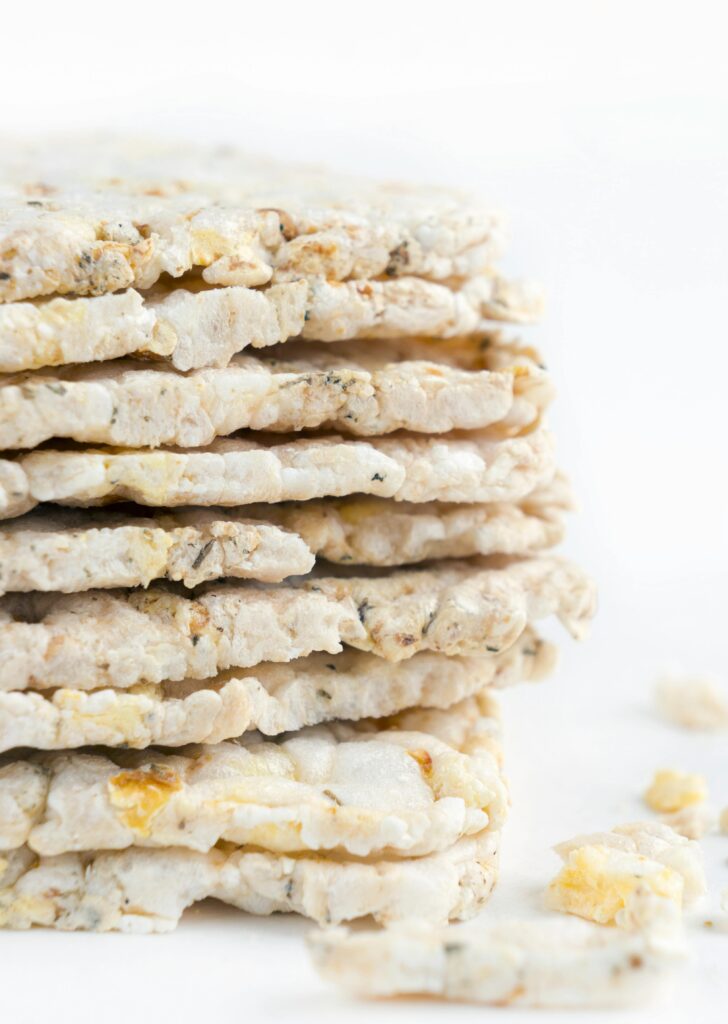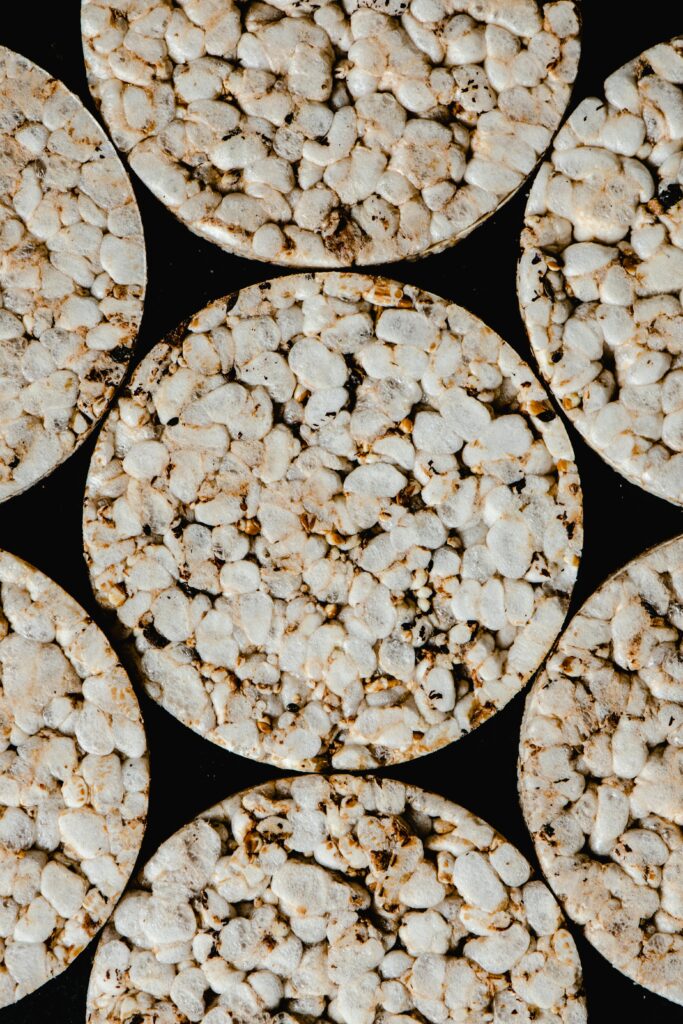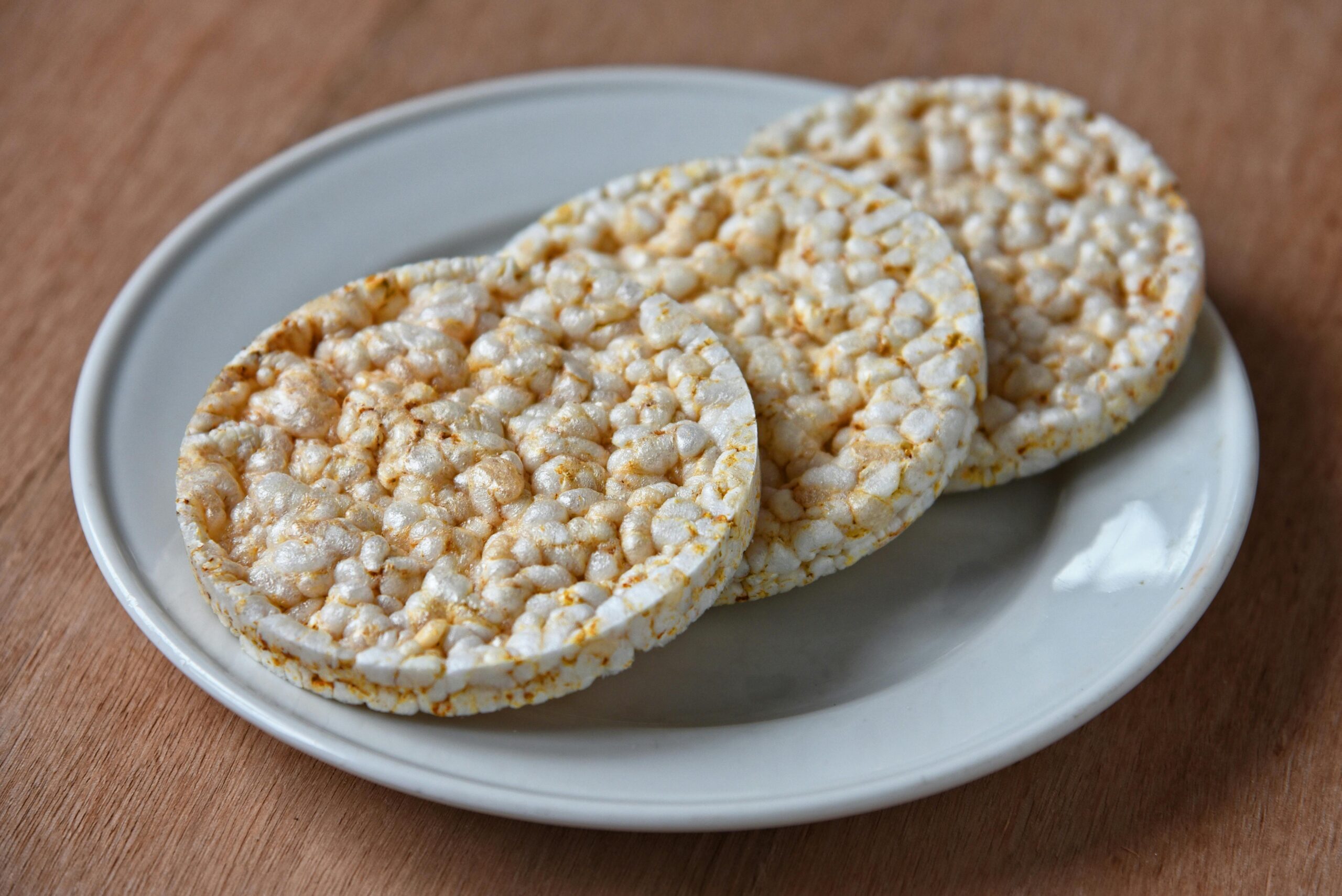Introduction:
This is a paragraph.
At just 35-40 calories per cake, rice cakes have long been synonymous with diet food. But here’s a surprising fact: Japanese researchers found that resistant starch in rice products can boost fat burning by up to 50%! I’ve spent years analyzing diet trends, and rice cakes remain a controversial topic in weight loss circles. Let’s cut through the noise and explore whether these crunchy snacks deserve a place in your weight loss journey.
Nutritional Profile of Rice Cakes
Let me share detailed nutritional information about rice cakes while keeping it specific and evidence-based.
A standard plain rice cake (9g) contains:
– Calories: 35
– Carbohydrates: 7.3g
– Protein: 0.7g
– Fat: 0g
– Fiber: 0.4g
– Sodium: 29mg
Brown rice cakes contain slightly more fiber (0.7g) and protein (0.9g) compared to white rice varieties. The higher fiber comes from the intact bran layer.
The glycemic index of plain rice cakes ranges from 78-82, making them a high-GI food. This means they can cause rapid blood sugar spikes. Pairing them with protein or healthy fats helps moderate this effect.
Flavored varieties often contain additional ingredients:
– Caramel: +2g sugar per cake
– Chocolate: +3g sugar, +1g fat
– Apple cinnamon: +1.5g sugar
– Salt and vinegar: +45mg sodium
Many brands add preservatives like BHT or BHA. Some organic varieties use natural preservatives like rosemary extract.
Watch out for “multigrain” varieties – they often don’t contain significantly more nutrients than plain versions unless specifically fortified.
For weight management, consider that while low in calories, rice cakes’ high GI can trigger hunger shortly after eating. Adding protein-rich toppings like nut butter or hummus helps increase satiety.

Pros of Rice Cakes for Weight Loss
Rice cakes offer notable advantages for weight management:
Calorie efficiency: 35 calories per cake makes portion control straightforward. A serving of 2 rice cakes provides satisfying volume for just 70 calories.
Crunch satisfaction: The crispy texture helps satisfy cravings for chips and crackers, which typically contain 140-160 calories per serving.
Topping versatility:
– 1 tbsp hummus (25 cal)
– 1 tbsp avocado (25 cal)
– 1 oz tuna (30 cal)
– 1 egg white (17 cal)
Creating complete snacks under 100 calories.
Convenience benefits:
– Long shelf life (6-8 months)
– No refrigeration needed
– Individual packaging options
– Lightweight for travel
Gluten-free certification makes them suitable for celiac disease or gluten sensitivity while maintaining calorie goals.
Research indicates crunchy textures increase satiety signals compared to soft foods of equal calories, supporting portion control through enhanced mindful eating.
Pre-portioned nature helps prevent mindless eating common with other snack foods. The clear serving size (1-2 cakes) supports better calorie tracking.
Potential Drawbacks and Limitations
Let me share key limitations of rice cakes based on nutritional research:
High glycemic index (82) causes rapid blood sugar spikes and crashes, potentially increasing hunger. This effect is particularly pronounced when eaten alone.
Nutrient density is minimal:
– No significant vitamins/minerals
– Negligible protein (0.7g)
– Very low fiber (0.4g)
– Limited healthy fats
Satiety challenges:
– Quick digestion due to processed nature
– Low protein content doesn’t trigger fullness hormones
– Minimal fiber fails to slow digestion
– Air-puffed texture provides temporary volume but little sustenance
Common misconceptions:
– “Zero-calorie food” – actually 35 calories each
– “Filling snack” – provides temporary volume only
– “Healthier than bread” – often lacks bread’s nutrients
Portion control issues:
– Easy to overeat due to light texture
– Multiple cakes needed for satisfaction
– Toppings can quickly add calories
– Blood sugar effects may trigger additional snacking
Adding protein-rich toppings and limiting serving size to 1-2 cakes helps address these limitations.

Smart Ways to Eat Rice Cakes for Weight Loss
Optimal rice cake varieties:
– Plain brown rice (higher fiber, protein)
– No added sugars/flavors
– Low-sodium options (<50mg)
– Whole grain varieties
Balanced topping combinations (under 150 calories):
1. Greek yogurt (2 tbsp) + berries
2. Cottage cheese (1/4 cup) + cucumber
3. Mashed avocado (2 tbsp) + everything bagel seasoning
4. Tuna (2 oz) + mustard
5. Hummus (1 tbsp) + cherry tomatoes
Timing recommendations:
– Post-workout with protein topping
– Mid-morning with healthy fat
– 30 minutes before meals to curb hunger
– Not ideal for bedtime snacks
Blood sugar management:
– Always pair with protein/fat
– Limit to 1-2 cakes per serving
– Space 2-3 hours between servings
– Avoid eating alone
Complete snack ideas:
– Rice cake + 1 tbsp almond butter + banana slices (180 cal)
– Rice cake + 2 oz turkey + tomato (120 cal)
– Rice cake + 1/4 cup cottage cheese + cucumber (95 cal)
– Rice cake + 2 tbsp guacamole + radish (130 cal)
Best Toppings and Combinations for Weight Management
Protein-rich toppings (protein/serving):
– Cottage cheese (1/4 cup) – 7g
– Greek yogurt (2 tbsp) – 5g
– Tuna (2 oz) – 13g
– Hard-boiled egg (1) – 6g
– Turkey breast (2 oz) – 12g
Healthy fats (serving size):
– Avocado (2 tbsp) – 4.5g fat
– Almond butter (1 tbsp) – 8g fat
– Hummus (2 tbsp) – 5g fat
– Olive oil drizzle (1 tsp) – 4.5g fat
Fresh produce pairings:
– Sliced cucumber + radish
– Cherry tomatoes + microgreens
– Apple + cinnamon
– Berries + mint
– Banana + cinnamon
Balanced meal combinations:
1. Breakfast (300 cal):
– 2 rice cakes
– 1/4 avocado
– 2 eggs
– Cherry tomatoes
2. Lunch (350 cal):
– 2 rice cakes
– 3 oz tuna
– 1 tbsp light mayo
– Cucumber slices
Portion guidelines:
– Protein: 2-3 oz
– Healthy fats: 1-2 tbsp
– Fresh produce: 1/2 cup
– Total calories per serving: 150-200
Conclusion:
Rice cakes can be a helpful tool in your weight loss journey when used strategically. While they’re not a miracle food, their low-calorie nature and versatility make them a practical choice for mindful snacking. The key lies in how you incorporate them into your diet – focus on nutritious toppings and proper portions. Ready to give rice cakes a try? Start with one of our suggested topping combinations and listen to your body’s response!
